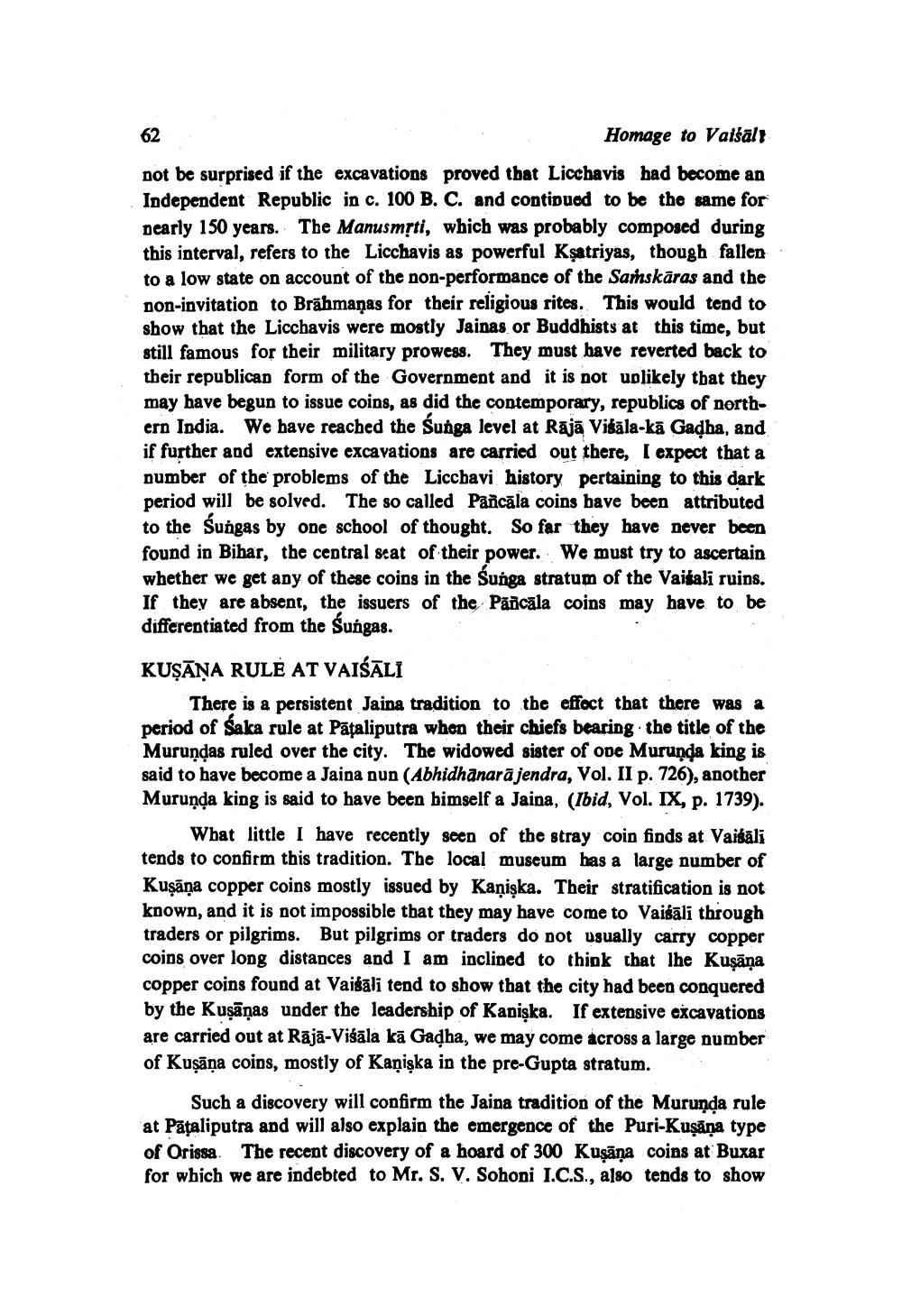________________ 62 Homage to Vaisali not be surprised if the excavations proved that Liccbavis had become an Independent Republic in c. 100 B. C. and continued to be the same for pearly 150 years. The Manusmrti, which was probably composed during this interval, refers to the Licchavis as powerful Ksatriyas, though fallen to a low state on account of the non-performance of the Sanskaras and the non-invitation to Brahmanas for their religious rites. This would tend to show that the Licchavis were mostly Jainas or Buddhists at this time, but still famous for their military prowess. They must have reverted back to their republican form of the Government and it is not uplikely that they may have begun to issue coins, as did the contemporary, republics of northern India. We have reached the Sunga level at Raja Vilala-ka Gadba, and if further and extensive excavations are carried out there, I expect that a number of the problems of the Liccbavi history pertaining to this dark period will be solved. The so called Pancala coins bave been attributed to the Sungas by one school of thought. So far they have never been found in Bibar, the central seat of their power. We must try to ascertain whether we get any of these coins in the Sunga stratum of the Vaisali ruins. If they are absent, the issuers of the Pancala coins may have to be differentiated from the Sungas. KUSANA RULE AT VAISALI There is a persistent Jaina tradition to the effoct that there was a period of Saka rule at Pataliputra when their chiefs bearing the title of the Murundas ruled over the city. The widowed sister of ope Murunda king is said to have become a Jaina nun (Abhidhanarajendra, Vol. II p. 726), another Murunda king is said to have been bimself a Jaina, (Ibid, Vol. IX, p. 1739). What little I have recently seen of the stray coin finds at Vaigali tends to confirm this tradition. The local museum has a large number of Kusana copper coins mostly issued by Kaniska. Their stratification is not known, and it is not impossible that they may have come to Vaigali through traders or pilgrims. But pilgrims or traders do not usually carry copper coins over long distances and I am inclined to think that lhe Kusana copper coins found at Vaigali tend to show that the city had been conquered by the Kusanas under the leadership of Kaniska. If extensive excavations are carried out at Raja-Visala ka Gadha, we may come across a large number of Kusana coins, mostly of Kaniska in the pre-Gupta stratum. Such a discovery will confirm the Jaina tradition of the Murunda rule at Pataliputra and will also explain the emergence of the Puri-Kusana type of Orissa. The recent discovery of a hoard of 300 Kusana coins at Buxar for which we are indebted to Mr. S. V. Sohoni I.C.S., also tends to show




